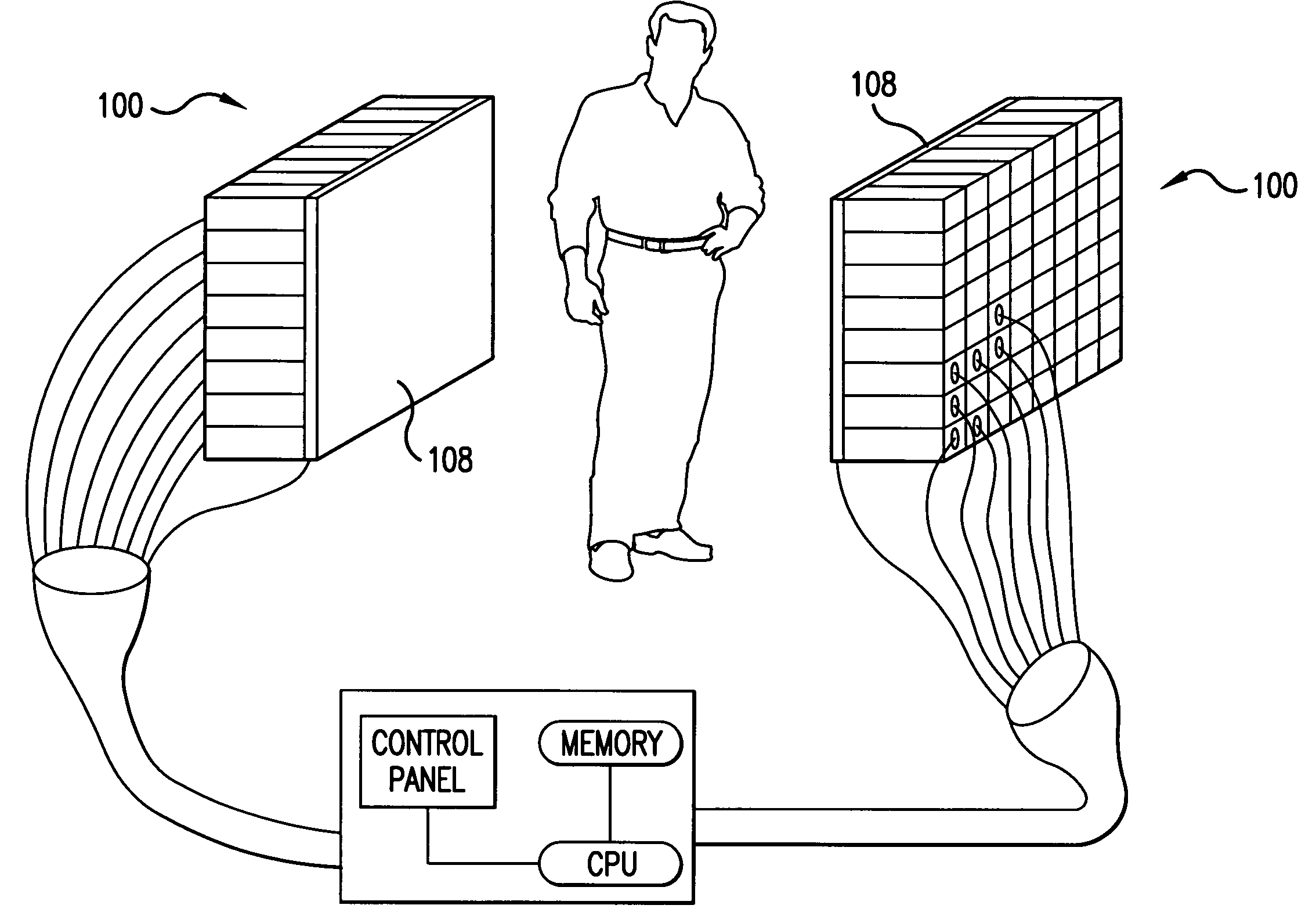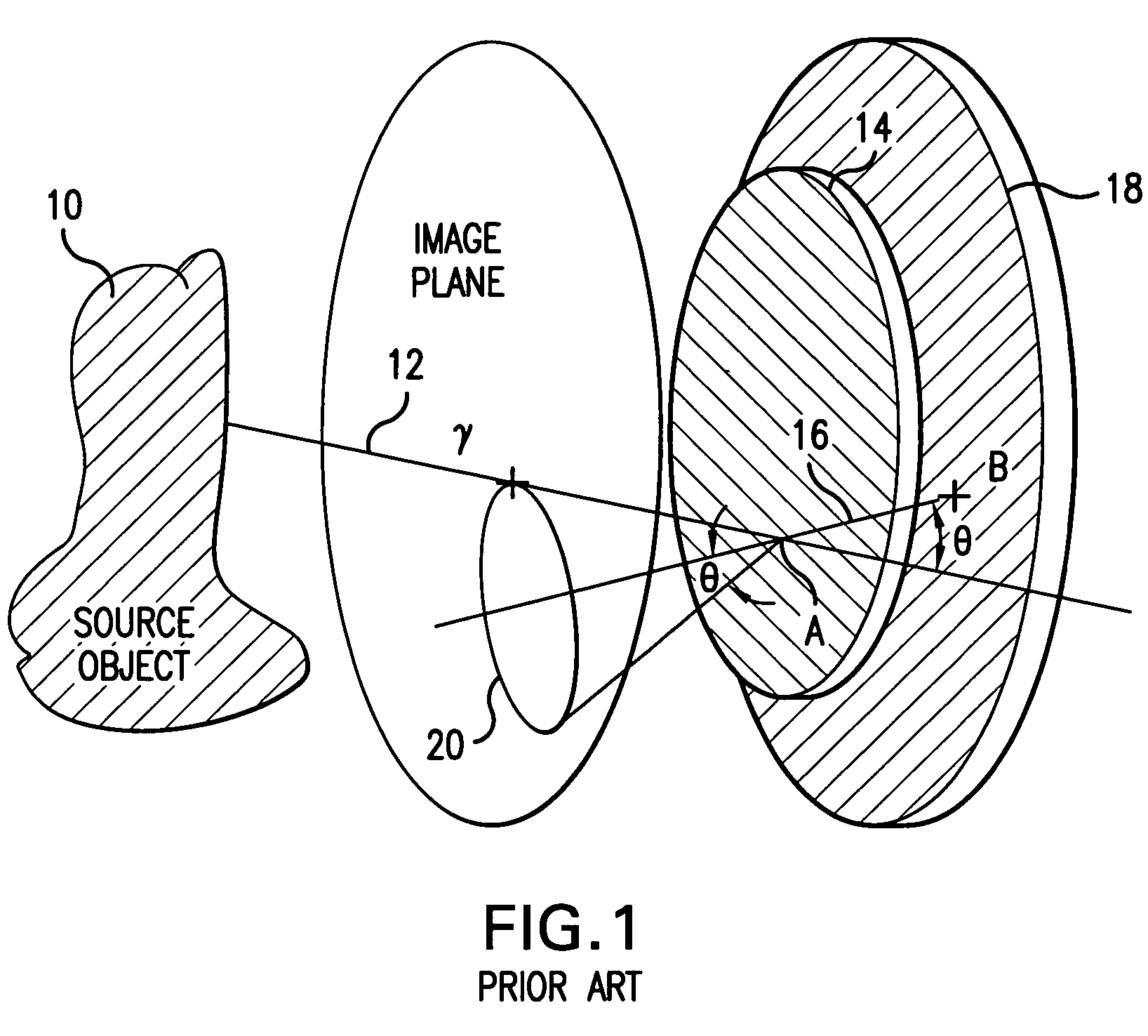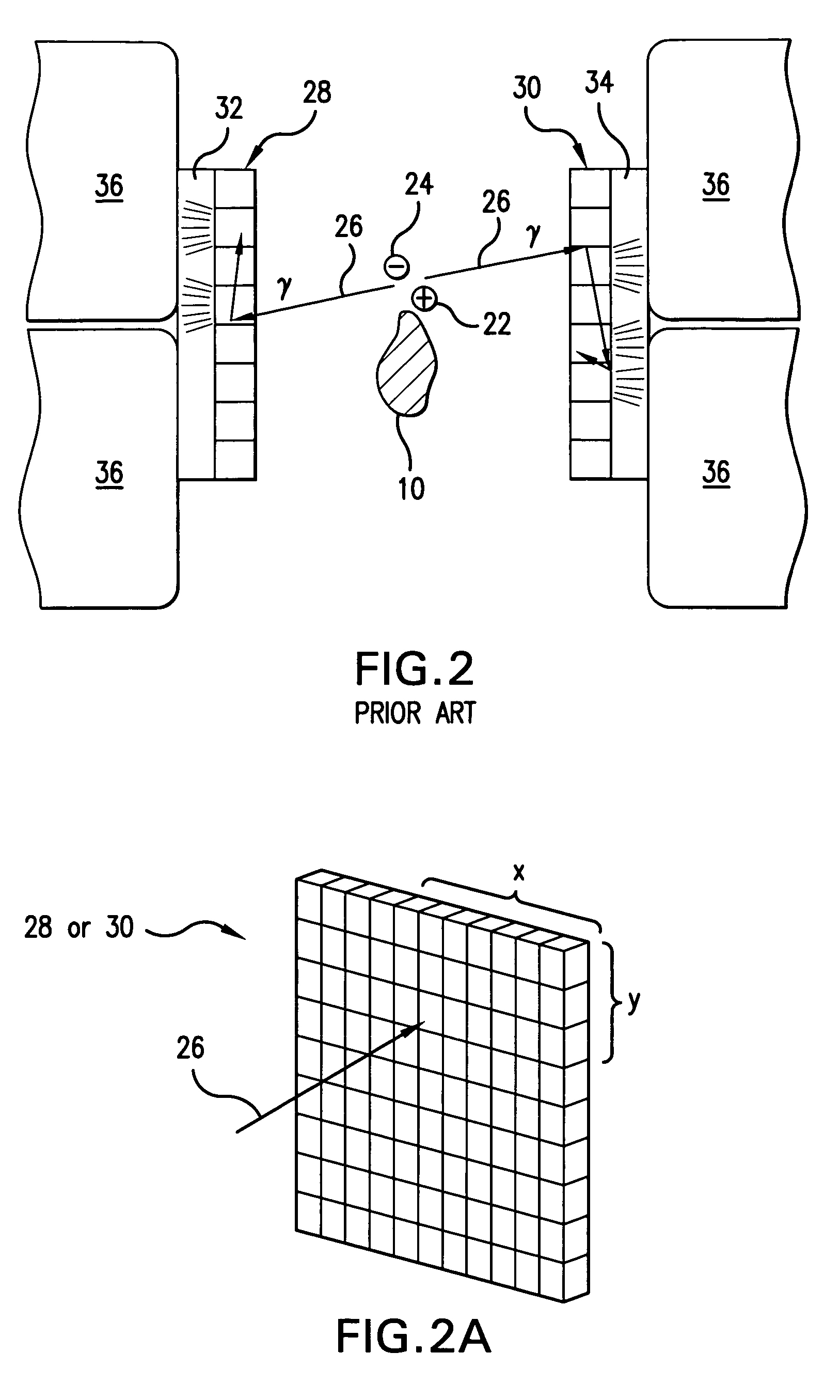Nuclear imaging using three-dimensional gamma particle interaction detection
a technology of gamma particle interaction and nuclear imaging, applied in the field of nuclear imaging, to achieve the effect of reducing uncertainty and increasing the resolution of composite images
- Summary
- Abstract
- Description
- Claims
- Application Information
AI Technical Summary
Benefits of technology
Problems solved by technology
Method used
Image
Examples
Embodiment Construction
[0021]The imaging method and apparatus of the invention utilize a pair of opposing, semiconductor-based gamma interaction detectors that are arranged somewhat similarly to the prior art, scintillation-based detectors shown in FIG. 2. Each detector 100 (FIG. 3) is constructed as an array of individual semiconducting elements or “pixels”102, which preferably are cadmium zinc telluride, CdZnTe, and each detector has on the order of ten by ten such pixels. Each element or pixel 102, which is on the order of one millimeter by one millimeter in height and width and on the order of one centimeter in length, has an electrode at each end thereof. Preferably, the detector is constructed with individual coplanar grid anodes 104 (and their associated leads 106) bonded to the individual ends of the detecting elements forming one surface of the detector 100 and a single continuous cathode 108 bonded across all the opposite ends of the semiconductor detecting elements 102 in a gamma interaction-de...
PUM
 Login to View More
Login to View More Abstract
Description
Claims
Application Information
 Login to View More
Login to View More - R&D
- Intellectual Property
- Life Sciences
- Materials
- Tech Scout
- Unparalleled Data Quality
- Higher Quality Content
- 60% Fewer Hallucinations
Browse by: Latest US Patents, China's latest patents, Technical Efficacy Thesaurus, Application Domain, Technology Topic, Popular Technical Reports.
© 2025 PatSnap. All rights reserved.Legal|Privacy policy|Modern Slavery Act Transparency Statement|Sitemap|About US| Contact US: help@patsnap.com



